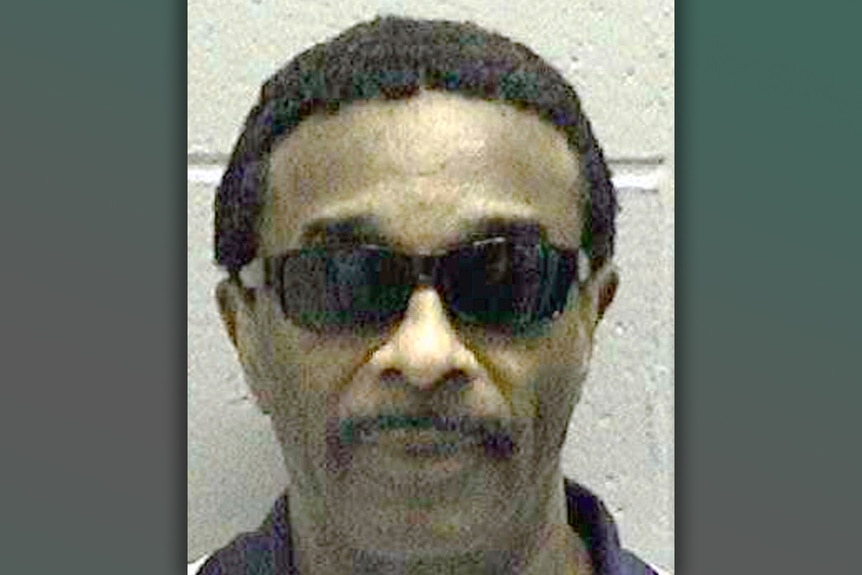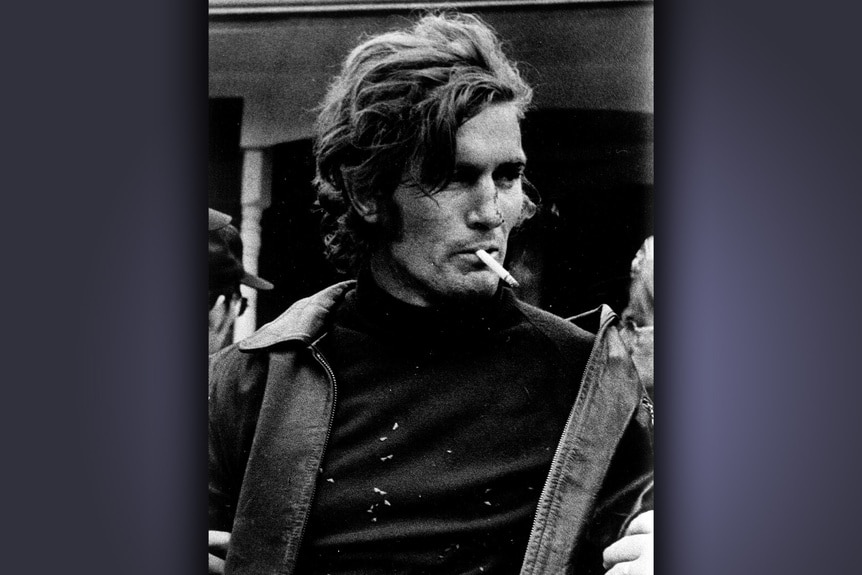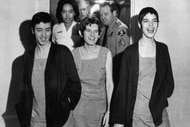Create a free profile to get unlimited access to exclusive videos, breaking news, sweepstakes, and more!
Georgia’s Most Brutal Serial Killers, from the Stocking Strangler To the Atlanta Ripper
Whether they hunted for victims in national forests or within their own family, these cold-blooded serial killers all terrorized the state of Georgia.
From an ominous murderer reminiscent of Jack the Ripper who struck at the turn of the 20th century, to a cold-blooded killer who raped and strangled elderly women decades later, Georgia has been a hunting ground for a slew of terrifying serial killers.
While some are suspected of targeting children, others relied on their charisma and charm to lure unsuspecting victims to their death, or took the lives of their own family members.
Their methods, motives and preferred victim type may differ, but the one thing all these killers have in common is that they carried out their dark deeds in the state of Georgia.
As Oxygen’s The Real Murders of Atlanta gears up for this third season, premiering Saturday, August 17 at 9 p.m. ET/PT, Oxygen.com is taking a look at some of the most brutal serial killers in Georgia's history.
While these repeat offenders won't be featured on this season of the show, plenty of other killers will, each terrorizing a different set of victims.
Stocking Strangler/Carlton Gary
Labeled the Stocking Strangler for his acts, Carlton Gary terrorized Columbus, Georgia in the late 1970s. Gary targeted elderly white women in a historic neighborhood of the city, Wynnton, mostly striking at night, strangling his victims and usually leaving a stocking tied around their necks as a chilling calling card, according to the Georgia Attorney General's Office. Although he was only convicted in the killings of three women, authorities suspect he sexually assaulted a total of nine women, killing seven of them.
One of the surviving victims positively identified Gary as her attacker. He later confessed that he was present at or knew of eight of the nine Wynnton area attacks, But he claimed that he only robbed the women's homes and that the rapes and murders were carried out by another man. Authorities were unable to find any evidence to support that claim and Gary’s fingerprints were found at four of the crime scenes. He was convicted of three counts each of malice murder, rape and burglary and sentenced to death in 1986. Gary was executed for his crimes in 2018, according to The Atlanta Journal-Constitution.
RELATED: Surgeon Disappears During Wife's Birthday Trip to Greece and His Dark Secrets Come To Light
The Atlanta Ripper
About two decades after Jack the Ripper preyed on women in the streets of London, Atlanta had its own violent killer on the loose during a period of high racial tension in the city. Between 1911 and 1915, at least 20 Black women were brutally killed, many of whom had their throats cut and suffered significant head trauma, according to TV station Atlanta News First.
The unknown killer was soon dubbed The Atlanta Ripper in area newspapers due to the crimes' similarities to the work of Jack the Ripper, and because notes left behind at some of the scenes were signed “Jack the Ripper,” according to The Atlanta Journal-Constitution. But much like London case, The Atlanta Ripper was never identified or caught and there are still questions as to whether all the victims can be linked to the same killer.
Casanova Killer/Paul John Knowles
Paul John Knowles — who was known as the Casanova Killer because of his good looks and charm — terrorized the South in the 1970s and is suspected of killing at least 18 people. Knowles himself bragged that the number was much higher, placing it at 35, but authorities say he was also known to exaggerate, according to Jacksonville, Florida station WJXT.
After escaping from a Jacksonville jail cell in 1974, Knowles went on a murder spree throughout the South, seemingly targeting men, women, children and the elderly at random. His murder spree inched toward its conclusion after Knowles was spotted by a trooper in Florida. When the trooper tried to pull him over, he grabbed the man’s service weapon, then used his patrol car to pull over another driver, according to Macon, Georgia-based TV station WGXA.
Knowles drove both men to Pulaski County, Georgia, where he handcuffed them to a tree and fatally shot them. He was apprehended in December of 1974 and killed by a Georgia Bureau of Investigation agent after Knowles, who was handcuffed in the backseat, took hold of a sheriff's gun and started shooting at two authorities.
Wayne Williams/Atlanta Child Murders suspect
Freelance photographer Wayne Williams was convicted in 1982 of murdering two grown men, but he’s suspected of also killing more than 20 other individuals as part of the Atlanta Child Murders. The FBI has said that a total of 29 Black children, teens and adults were murdered in Atlanta beginning on July 21, 1979, and going on for 22 months.
The killer initially disposed of the bodies in desolate areas, but later began tossing them into the Chattahoochee River. On May 22, 1981, an FBI agent and Atlanta police were surveilling one of the Atlanta area bridges that spanned the river when they heard a loud splash and saw a car speeding across the bridge. Williams, who had been driving the vehicle, was stopped. They let him go, but when the body of a man named Nathaniel Cater washed up two days later, authorities took a closer look at Williams, finding he'd been arrested earlier that year for impersonating a police officer. Williams later failed several polygraph tests and was eventually arrested on June 21, 1981.
Authorities were able to link Williams to two murders through hair and fiber analysis, as well as testimony from witnesses. He was convicted of those murders on February 27, 1982 and sentenced to life in prison. Williams has never been charged for the child murders — and has continued to proclaim his innocence over the years — but authorities say the killings stopped after his arrest. After the trial, law enforcement found that there was enough evidence to link Williams to another 20 of the 29 deaths.
National Forest Serial Killer/Gary Michael Hilton
Gary Michael Hilton, dubbed the National Forest Serial Killer, hunted for his victims in the wilderness. His heinous crimes were uncovered after University of Georgia graduate Meredith Emerson disappeared on January 1, 2008 while hiking on Blood Mountain with her dog, according to People. Witnesses reported seeing an older man with a distinctive red-colored dog in the area. Authorities were later able to identify the man as Hilton after getting a call from one of his former employers.
Hilton was arrested on January 4, 2008 while cleaning out his van at a convenience store gas station, and eventually led authorities to Emerson’s dismembered remains. Authorities were also able to link Hilton to the death of Florida nurse Cheryl Dunlap, who disappeared in 2007 after going to Florida's Apalachicola National Forest to read, and to the double homicide of elderly couple John and Irene Bryant. The couple disappeared in October of 2007 while hiking in North Carolina’s Pisgah National Forest.
Hilton is currently sitting on death row in Florida after being convicted of Dunlap’s murder in 2011 and sentenced to death, according to the United States Attorney’s Office for the Western District of North Carolina. He was also convicted and handed multiple life sentences for the murders of Emerson and the Bryants.
RELATED: Idaho Grandmother's Financial Crimes Revealed After Husband's Death in Boating Accident
Mrs. Bluebeard/Roberta Elder
When it came to finding victims, Roberta Elder had to look no further than her own family tree. The serial killer, dubbed by police as Mrs. Bluebeard in reference to a child’s fairytale, is suspected of killing three husbands, four of her children, three step-children, a cousin and her grandchild, according to The Atlanta Journal-Constitution. She’s also suspected of killing one of her husband’s former wives.
Roberta’s killing spree, believed to have started in 1938, wasn’t discovered until her husband, Reverend William M. Elder, died in 1952 after he told people he had eaten “bananas and cheese.” The coroner — who noticed that the Atlanta preacher was emaciated that his skin appeared ruddy — suspected he may have died from arsenic poisoning, which can present like pneumonia, according to the African American Intellectual History Society. That same coroner had examined two of the reverend's daughters, who had both died within the last two years of pneumonia.
When the arsenic tests on the reverend came back positive, authorities took a closer look at the other deaths in Elder’s orbit and suspected she used the same method to kill them. Roberta took out life insurance policies on many of her victims and cashed in when they died. She was convicted of murdering the reverend and sentenced to life in prison.






































